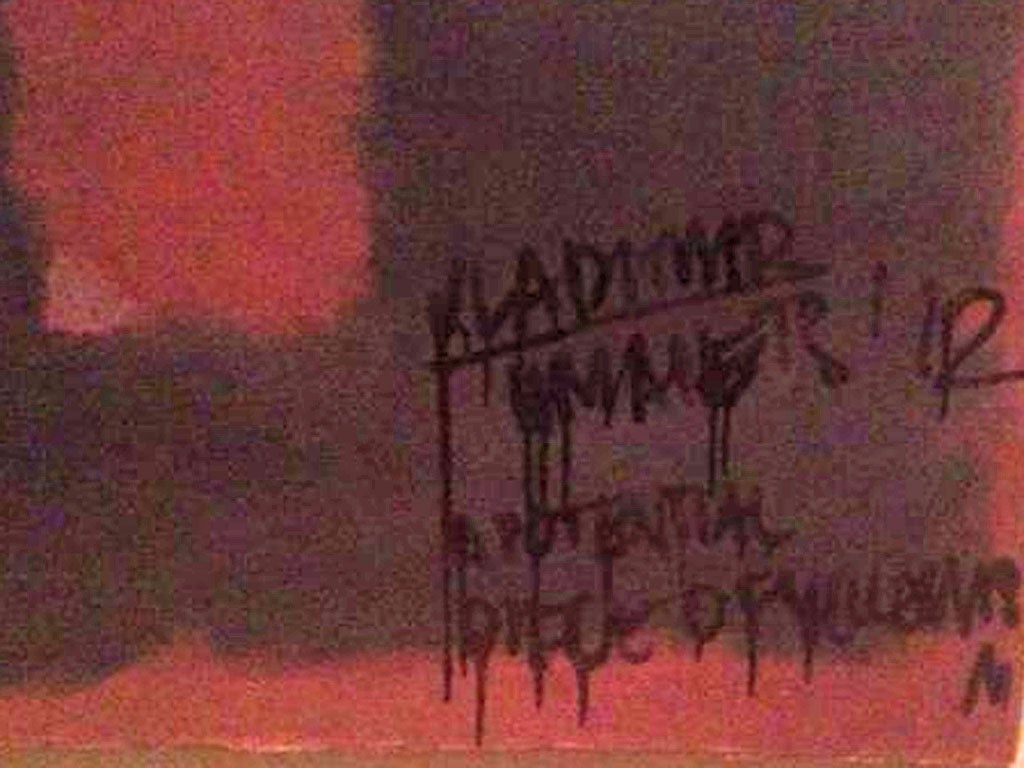Art attacks: Rothko tagged and the aesthetics of vandalism
The man who scribbled on a Mark Rothko painting this week wasn't your ordinary vandal – oh no, he was doing it to make a point. Join the queue, says John Walsh

Vladimir Umanets, the man who defaced Mark Rothko's Black on Maroon at Tate Modern, wrote on the canvas, "A potential piece of Yellowism". Pressed to explain, he said: "Yellowism is not art and yellowism isn't anti-art. It's an element of contemporary visual culture." He claimed his little scribble had increased the painting's value. "I want people to start talking about this," he said. "I don't want fame. I'm not seeking attention."
The spectacle of an "interventionist" playing games with a famous work – and talking arty bollocks about the result – goes back to Marcel Duchamp, who in 1919 added a moustache and beard to a cheap reproduction of Mona Lisa and named the result LHOOQ. (Say the letters in French and you get "Elle a chaud au cul", which translates as "she has a hot arse".)
Duchamps's most famous work is Fountain, a china urinal he tried to exhibit, upside-down, at the Society of Independent Artists show in 1917 (it was rejected.) In 2006, at the Pompidou Centre, the piece was attacked with a hammer by a performance artist called Pinoncelli, who claimed Duchamps would have greeted his act as a piece of art. He'd already urinated into it in Nimes in 1993.
In 2000, two China-born, London-based, art-graduate mischief-makers, Yuan Chai and Jian Jun Xi, tried to do the same but failed. A year earlier, in October 1999, before spectators at Tate Modern, they'd staged a half-naked pillow fight on Tracey Emin's unmade-bed-with-soiled-knickers exhibit. They insisted their action was a work of art called Two Naked Men Jump into Tracey's Bed.
"We wanted to push her work to further limits, make it more sensational, interesting and significant," said Mr Xi, who was then aged 37 and now works as a property investor. "We're trying to challenge these artists."
They were detained for four hours by security guards but released without charge.
Duchamps was a leading light of the anarchic Dada movement, which started life after the First World War. In one show, the organisers encouraged visitors to smash the exhibits with an axe, as a critical "intervention."
Less drastic recent ones include the artist who poured black ink into the formaldehyde tank in which a sheep floated in Damien Hirst's Away from the Flock at London's Serpentine Gallery. The perpetrator claimed his intention was for Hirst to benefit from the publicity (Hirst, unimpressed, had him prosecuted). And there have been subversions by Banksy the street graffitist, who has snuck his own works into museums beside classic works. In the British Museum he hung his version of a primitive cave painting, showing a stick man pushing a supermarket trolley. Banksy himelf is a frequent victim of artistic interventionism.
Sometimes you wish these people could go and create something of their own, rather than parasiting on other artists' works. As to the question "Are such events art or vandalism?" the answer's simple. If it's a member of the public, it's vandalism. If it's an artist doing it, it's art.
Subscribe to Independent Premium to bookmark this article
Want to bookmark your favourite articles and stories to read or reference later? Start your Independent Premium subscription today.

Join our commenting forum
Join thought-provoking conversations, follow other Independent readers and see their replies